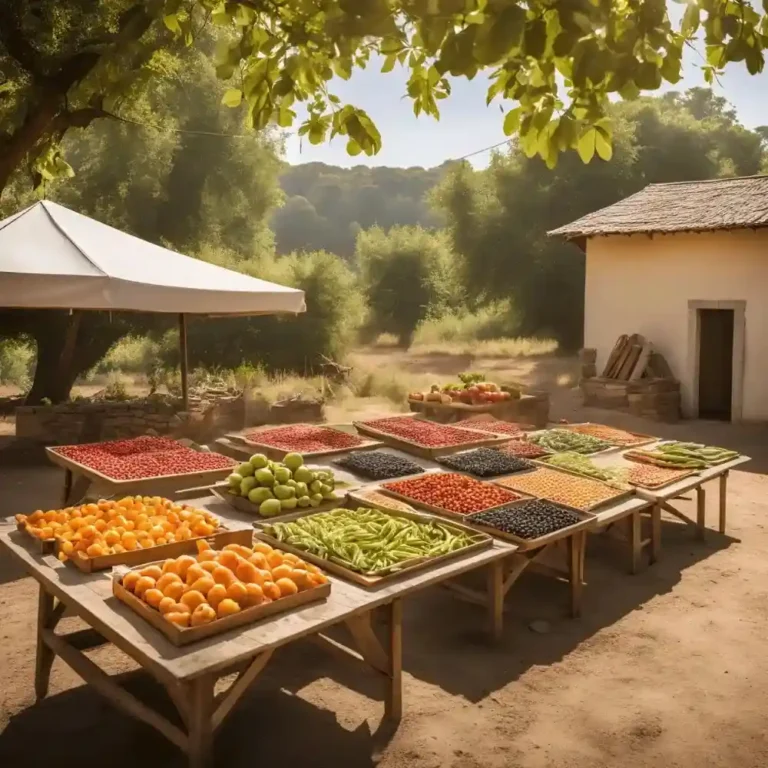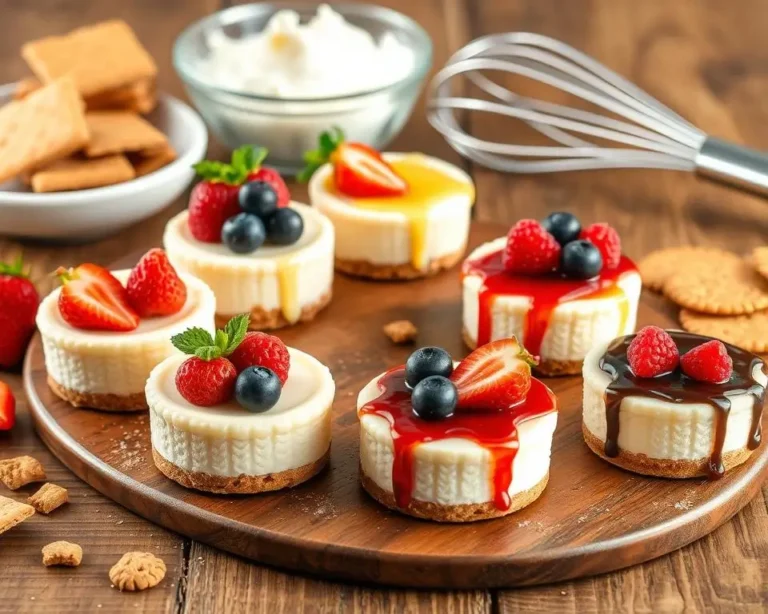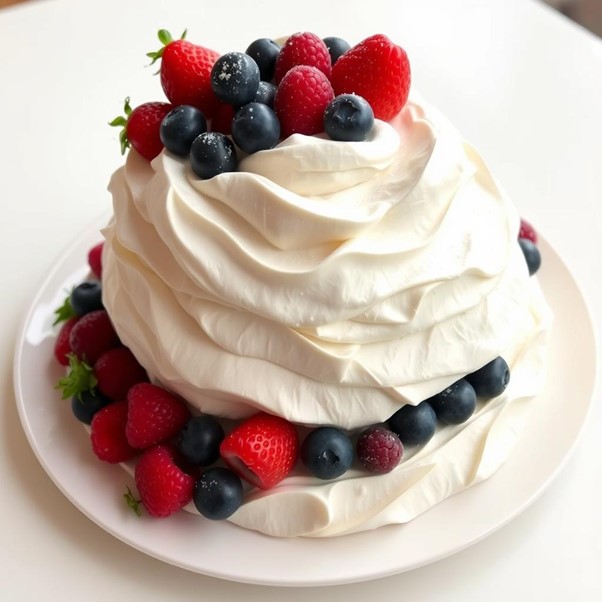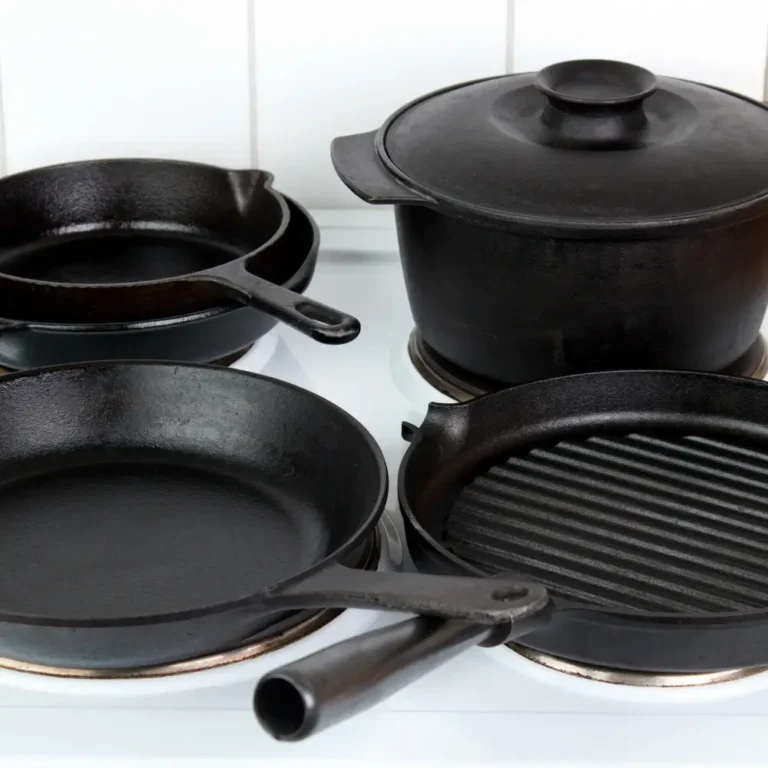Kitchen Safety: Tips To Avoid Hot Surface Burns
Introduction of Kitchen Safety:
The Importance of Kitchen Safety
Kitchen safety is a crucial aspect of maintaining a healthy and accident-free cooking environment. Whether you’re a seasoned chef or a home cook, understanding the risks, especially those involving hot surfaces, is vital. Burns and kitchen accidents can happen in an instant, but with the right precautions, they are entirely preventable. Prioritizing kitchen safety not only protects you and your loved ones but also ensures a smoother cooking experience.
Preview of the Article
This article focuses on kitchen safety by highlighting eight essential tips to protect against burns and accidents. From understanding common kitchen dangers to adopting practical safety measures, these tips will empower you to create a safer cooking space while preventing mishaps caused by hot surfaces.
Table of Contents:
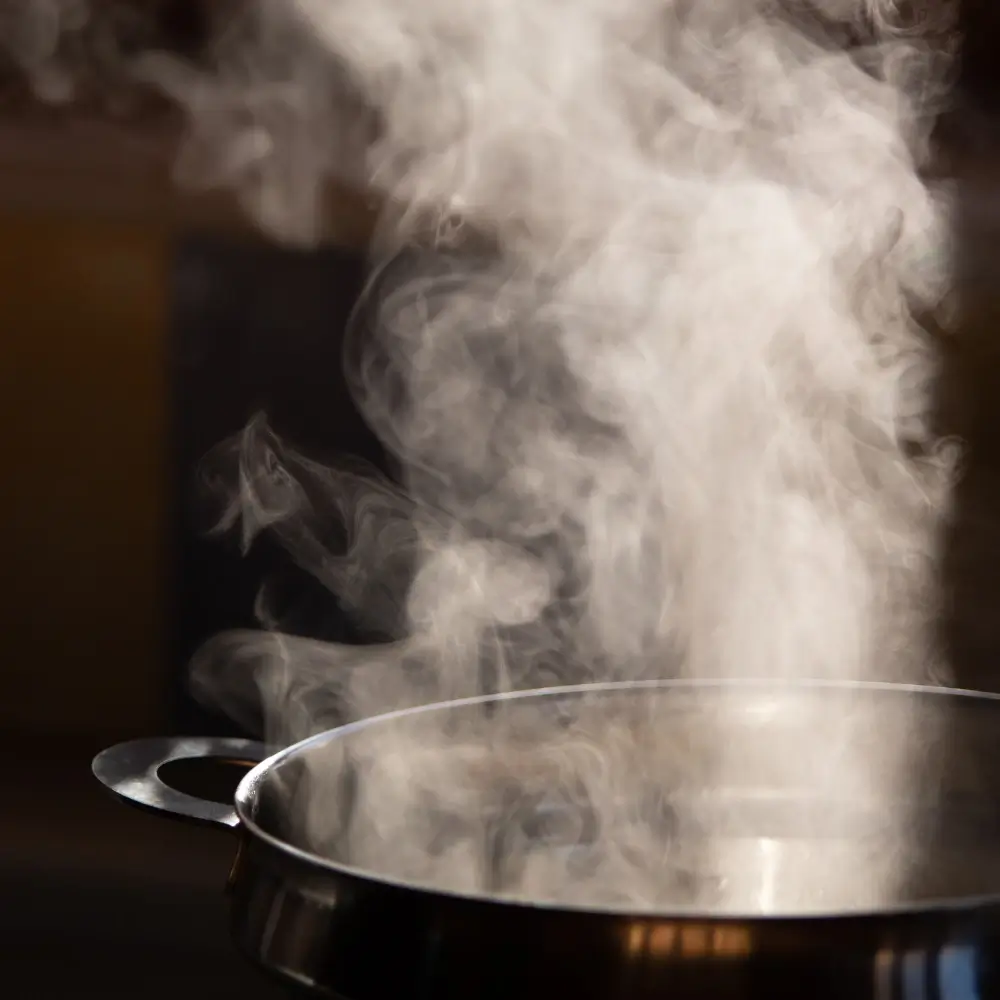
Section 1: Understanding the Risks of Hot Surfaces in the Kitchen:
Common Hot Surfaces
In every kitchen, common hot surfaces include stoves, ovens, frying pans, baking trays, and even hot pots or kettles. These surfaces can reach extremely high temperatures during cooking, posing significant risks if not handled carefully. Knowing which areas and tools are most likely to cause burns is the first step in kitchen safety.
Real-Life Examples of Negligence
Accidents caused by negligence around hot surfaces can range from mild burns to severe injuries. For instance, leaving a pan handle sticking out from the stove or using a damp towel to pick up a hot dish can lead to painful mishaps. Such examples underline the importance of following kitchen safety tips to avoid burns in the kitchen.
The Importance of Awareness and Preventive Measures
Awareness is a powerful tool in reducing the risks of burns and kitchen accidents. By recognizing potential kitchen dangers and adopting preventive measures like wearing heat-resistant gloves or keeping children away from hot zones, you can significantly minimize risks. Practicing hot surface safety in the kitchen ensures a safer cooking environment for everyone.
Section 2: Tip #1 – Always Use Heat-Resistant Gloves or Mitts:
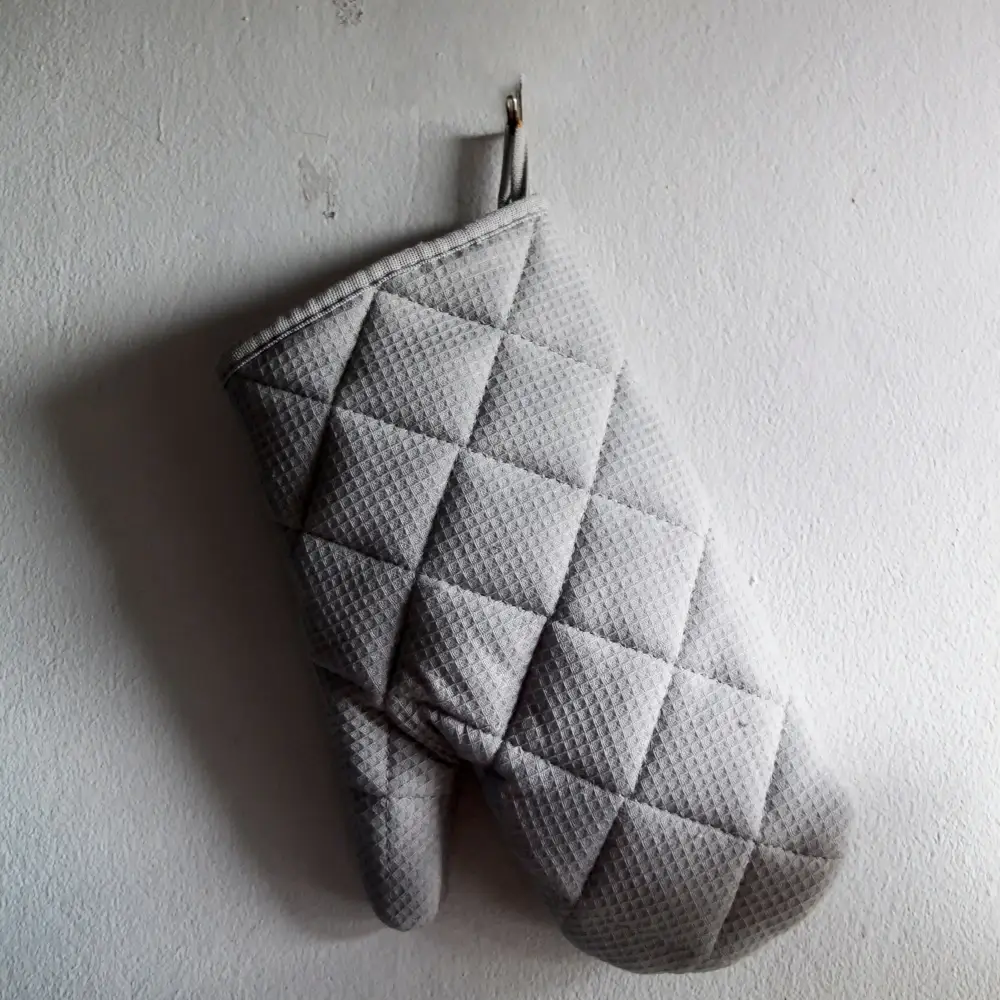
The Role of Gloves and Mitts in Preventing Burns
Heat-resistant gloves or mitts are essential for kitchen safety as they act as a barrier between your hands and hot surfaces. Whether you’re handling a baking tray or lifting a pot, these tools significantly reduce the risk of burns, making them a must-have for anyone cooking.
Types of Heat-Resistant Gloves and Their Features
There are various types of gloves designed for hot surface safety in the kitchen. Options include silicone mitts, which are waterproof and easy to clean, and Kevlar gloves, known for their high heat tolerance and durability. Choosing the right type depends on the intensity of heat you handle and your comfort preferences.
How to Select the Best Gloves for Your Needs
When selecting gloves, look for features like non-slip grip, high-temperature resistance, and flexibility. Ensure they fit snugly but allow for easy movement. Reading reviews and checking safety certifications can also guide you in finding gloves that prioritize kitchen safety tips.
Tips for Proper Glove Maintenance and Usage
To extend the lifespan of your gloves, clean them regularly according to the manufacturer’s instructions. Store them in a dry place to prevent damage and inspect them for wear and tear before each use. Proper care ensures your gloves remain reliable for avoiding burns in the kitchen.
Section 3: Tip #2 – Keep Flammable Items Away from Heat Sources:

Examples of Flammable Items Commonly Found in Kitchens
Many kitchens contain flammable items like dish towels, paper napkins, and plastic containers. When placed too close to heat sources such as stovetops or ovens, these items can easily ignite, creating a serious kitchen danger.
The Science Behind Heat Conduction and Fire Hazards
Heat spreads quickly through conduction, meaning flammable materials near a hot surface can catch fire even without direct contact. Understanding this science underscores the importance of proper organization to ensure hot surface safety in the kitchen.
Practical Steps to Organize Your Kitchen
To enhance kitchen safety, keep flammable items at least a foot away from stoves, ovens, and other hot surfaces. Use designated storage spaces for dish towels and paper products, and avoid placing plastic items on or near stovetops. Regularly reviewing your kitchen layout ensures you maintain a safe environment for cooking.
Section 4: Tip #3 – Use Proper Cookware and Tools:
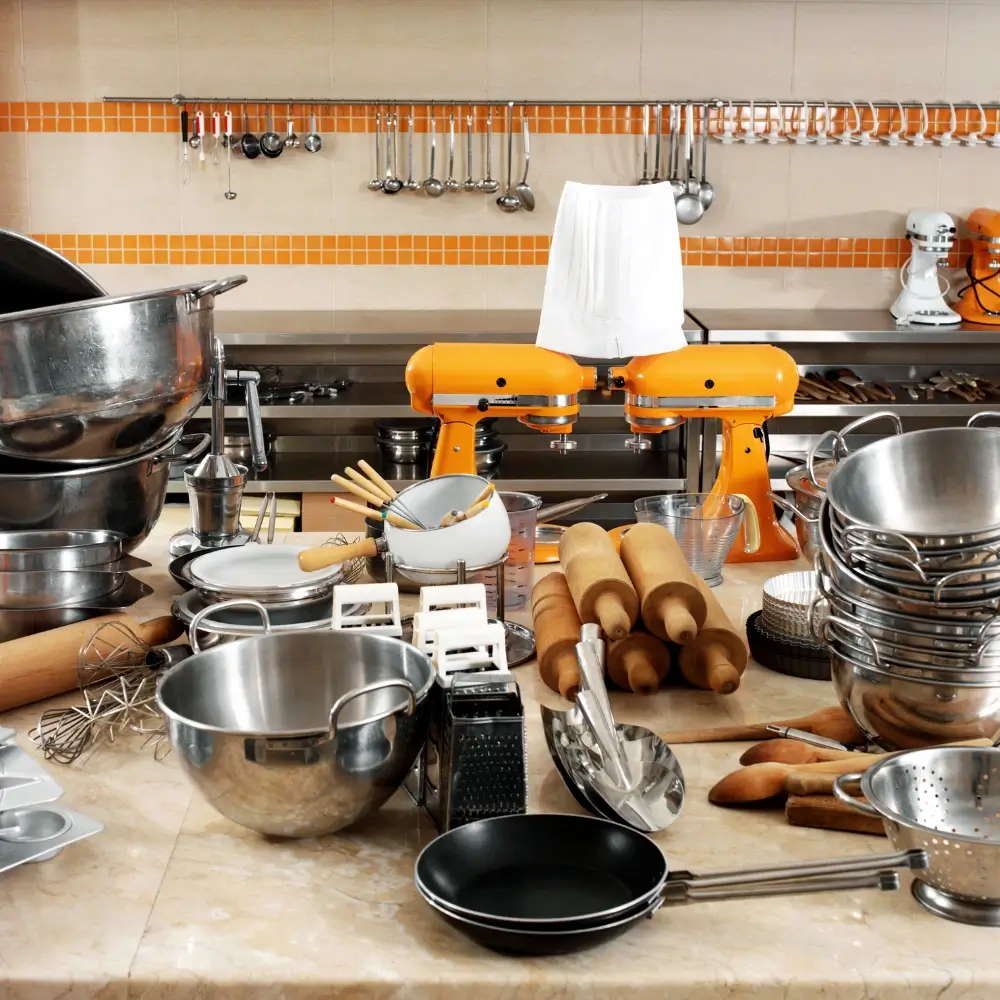
The Importance of Using Heat-Safe Materials
Using cookware made of heat-safe materials like stainless steel or cast iron is a cornerstone of kitchen safety. These materials distribute heat evenly, minimizing the risk of hotspots that could lead to burns or fire hazards.
How Damaged Cookware Can Become a Safety Hazard
Cracked pots, warped pans, or loose handles can pose serious kitchen dangers. Damaged cookware is not only inefficient but also increases the risk of spills or accidents, underscoring the need for regular inspections and replacements.
Examples of Tools Designed to Handle Hot Surfaces Safely
Invest in high-quality tools like tongs and spatulas with insulated or silicone-coated handles. These tools are essential for hot surface safety in the kitchen, as they allow you to manage high temperatures without risking burns.
Section 5: Tip #4 – Teach Children Kitchen Safety Rules:
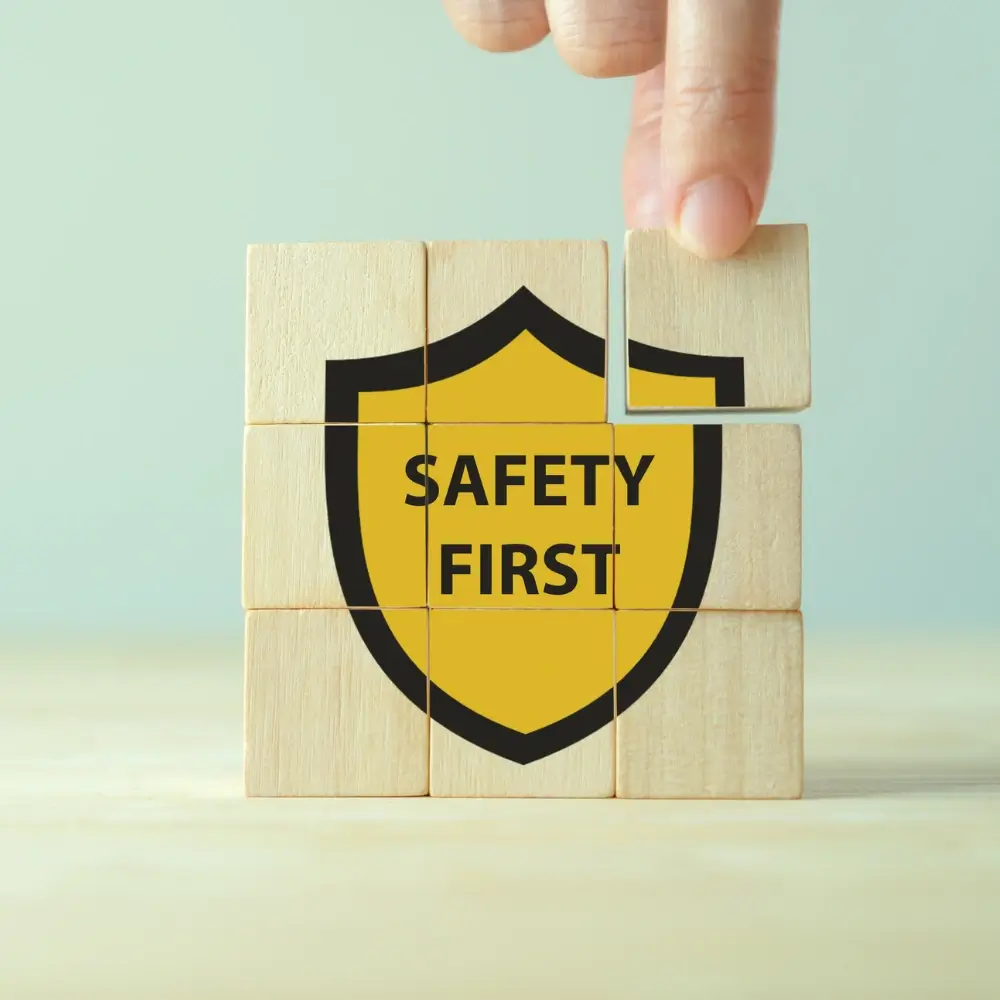
Why Children Are Particularly Vulnerable to Hot Surface-Related Accidents
Children lack the awareness and reflexes needed to navigate a busy kitchen, making them more prone to injuries. Teaching kitchen safety tips early can prevent accidents and build lifelong safe habits.
Simple Rules to Teach Children
Set clear rules, such as staying at least three feet away from stovetops and ovens, avoiding hot pots, and never touching pans or cords. These basic guidelines enhance kitchen safety and reduce risks.
Tools and Accessories to Childproof the Kitchen
Use safety accessories like stove knob covers, oven locks, and barriers to create a secure environment. These simple additions act as an extra layer of protection to prevent kitchen accidents.
Section 6: Tip #5 – Maintain Clean and Clear Cooking Areas:
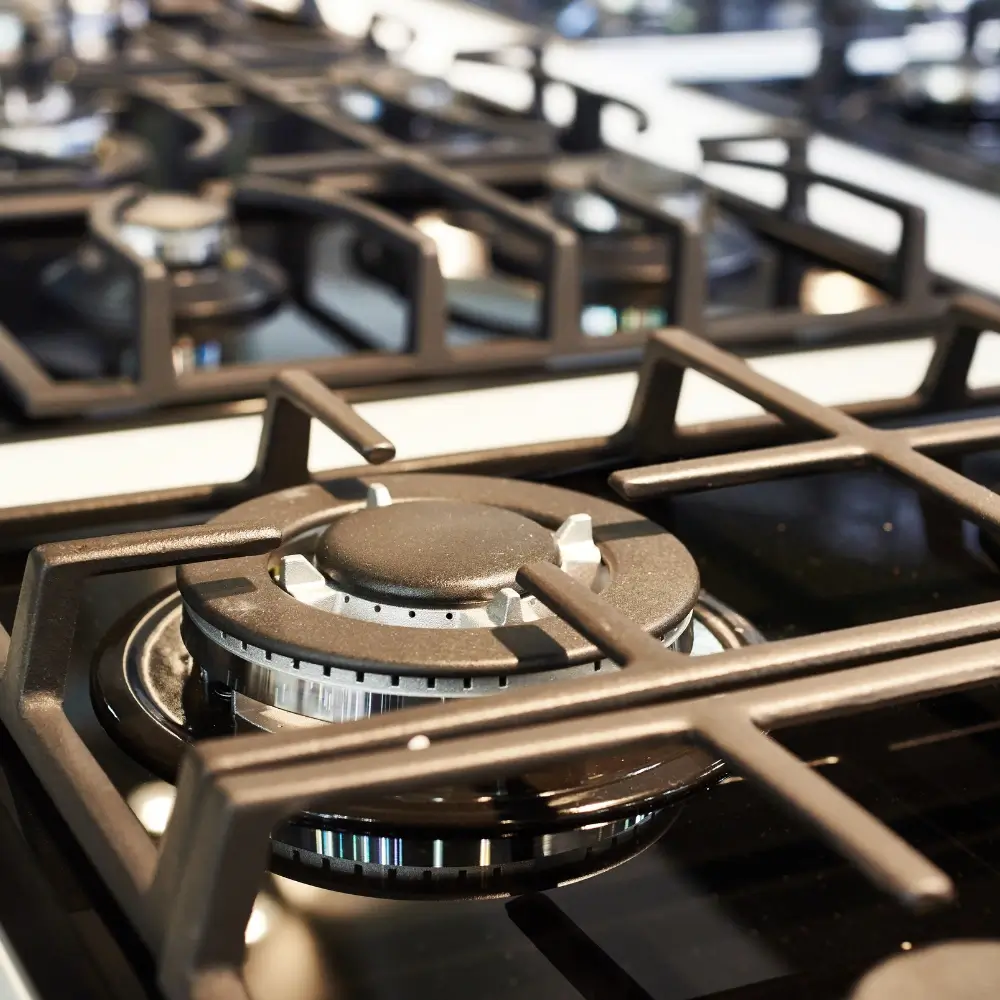
How Clutter Increases the Risk of Accidents
Cluttered countertops or stovetops increase the likelihood of tipping over hot cookware, making kitchen safety more challenging. A clean workspace reduces the risk of accidents and enhances efficiency.
Tips for Keeping Countertops and Stovetops Clean and Organized
Store items like utensils, oils, and seasonings in designated spaces away from heat sources. Regularly wipe down cooking areas to prevent grease buildup, which is both a safety and hygiene concern.
The Role of Regular Maintenance in Ensuring Safety
Inspect your cooking appliances frequently, checking for issues like damaged oven seals or clogged burners. Regular maintenance is crucial for reducing kitchen dangers and ensuring reliable performance.
Section 7: Tip #6 – Monitor Cooking at All Times:
Dangers of Leaving Pots and Pans Unattended
Unattended cooking is a leading cause of household fires and injuries. Staying vigilant while cooking is a vital aspect of kitchen safety tips to prevent overheating or spills.
The Importance of Timers and Alarms
Using timers or smart kitchen alarms can help you manage multiple tasks without losing track of your cooking. These tools are practical for maintaining focus and avoiding burns in the kitchen.
Examples of Incidents Due to Distraction While Cooking
From boiling pots overflowing to pans catching fire, many accidents occur because of distractions. A proactive approach to monitoring your cooking helps mitigate these common kitchen dangers.
Section 8: Tip #7 – Invest in Safety Equipment:
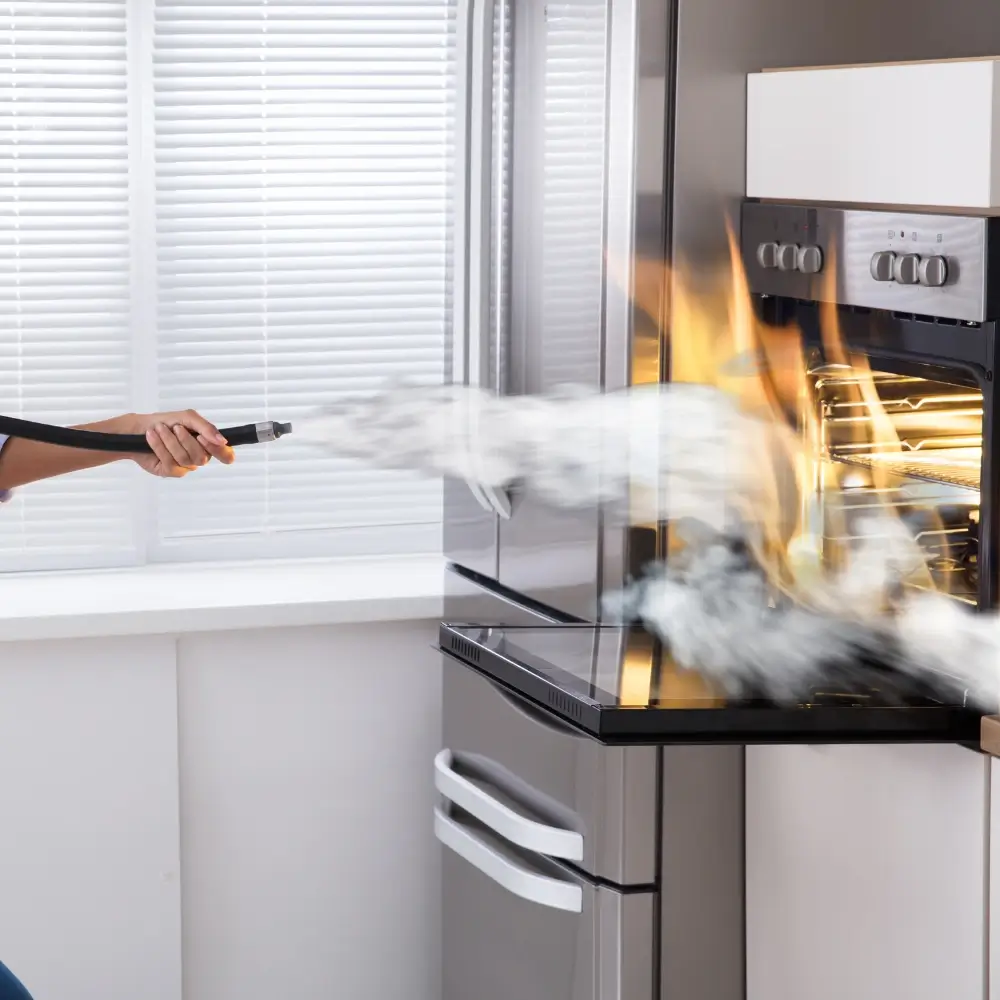
Fire Extinguishers, Smoke Detectors, and Fire Blankets: Must-Haves for Every Kitchen
Incorporating essential safety equipment like fire extinguishers, smoke detectors, and fire blankets into your kitchen is critical for preventing and managing emergencies. These tools play a vital role in kitchen safety, especially when working with hot surfaces that pose risks of fire or burns.
How to Use Safety Equipment Effectively in Case of an Emergency
Knowing how to use a fire extinguisher, properly activate a smoke detector, and deploy a fire blanket is crucial during an emergency. Kitchen safety extends beyond prevention, and effective response to emergencies ensures minimal damage or injury. Always read the instructions and practice using each tool regularly.
Regular Checks and Maintenance for Kitchen Safety Tools
Regular maintenance and checks for your kitchen safety equipment are essential. Test smoke detectors monthly, inspect fire extinguishers for pressure, and replace expired items to maintain optimal performance in case of a fire or accident. This proactive approach reduces kitchen dangers and enhances your overall safety.
Section 9: Tip #8 – Learn Basic First Aid for Burns:
Why Everyone Should Know Basic Burn Treatment Methods
Knowing how to treat burns effectively can prevent further damage and reduce pain. Burn treatment is an essential part of kitchen safety, as hot surfaces pose significant risks to everyone in the kitchen. Having first aid knowledge can save time and minimize the severity of the injury.
Step-by-Step Instructions for Handling Minor Burns
For minor burns, first remove the person from the heat source, then run cool water over the burn for 10-20 minutes. Cover the area with a clean, non-stick bandage, and avoid popping blisters. This basic burn care is a critical element of kitchen safety tips.
When to Seek Medical Help for More Serious Injuries
If the burn is severe, affects a large area, or is on the face, hands, or genitals, it’s essential to seek medical attention immediately. Serious burns require professional care to prevent complications like infections or permanent scarring. In these cases, time is critical, so knowing when to act is part of preventing kitchen accidents.
Common Mistakes to Avoid When Treating Burns
Common mistakes in treating burns include applying ice directly to the burn, using greasy ointments, or breaking blisters. These actions can worsen the injury. Instead, focus on cooling the burn with water and seek medical advice if necessary to ensure effective treatment.
Section 10: Bonus Safety Practices:
Handling Spills Promptly to Prevent Slips and Burns
Spills, especially oily or greasy ones, can create slippery surfaces that increase the risk of falls and burns. For optimal kitchen safety, clean spills immediately to avoid accidents. Keeping kitchen floors dry and clear is essential to maintaining a safe working environment.
Proper Clothing for Kitchen Work to Avoid Accidents
Wear clothing that fits properly and avoids any loose sleeves or fabric that could catch fire or get caught in appliances. Kitchen safety rules include using the right gear, such as aprons, and ensuring that your attire is both functional and protective when handling hot surfaces.
Importance of Good Ventilation to Prevent Overheating and Smoke Buildup
Good ventilation in the kitchen helps prevent overheating and the buildup of smoke, which can lead to dangerous situations like smoke inhalation or fire hazards. Ensure that your kitchen is well-ventilated, particularly when cooking with high heat, to maintain a safe and healthy cooking environment.
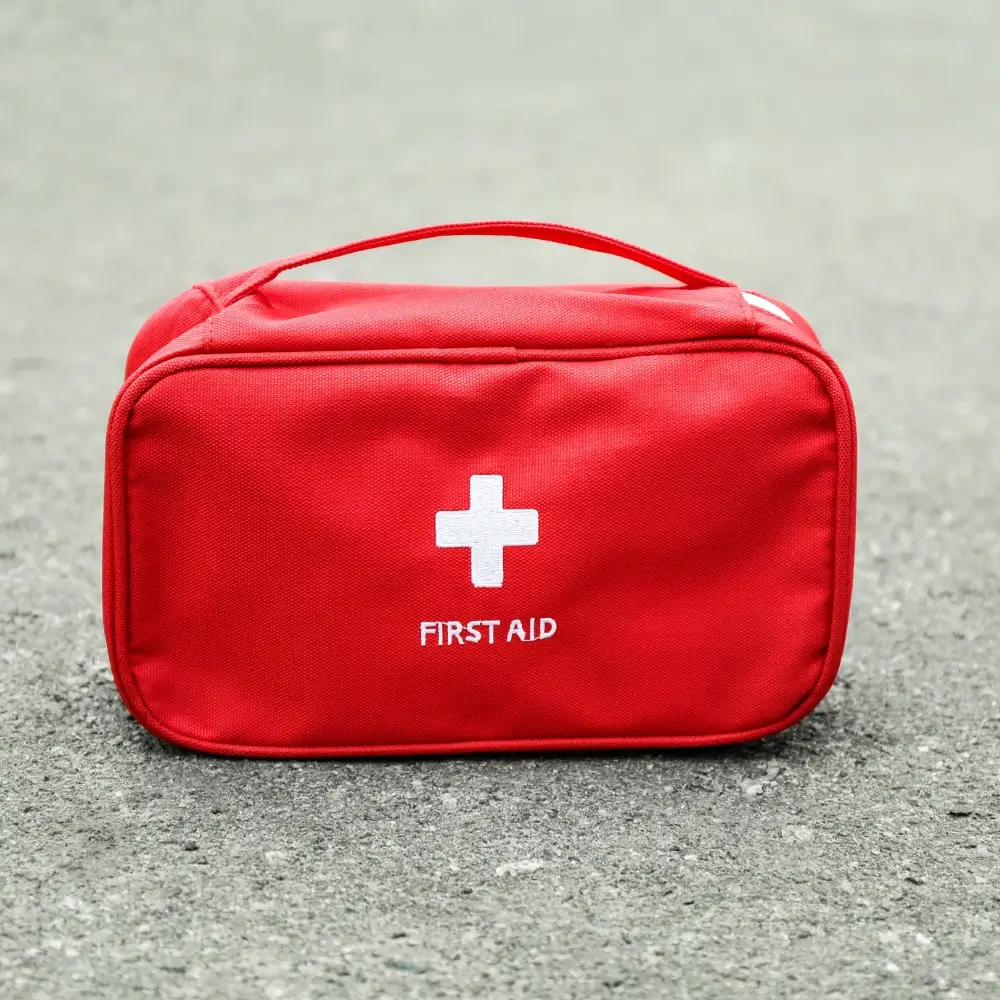
Conclusion:
In this article, we have covered eight essential kitchen safety tips to help you protect yourself from the dangers of hot surfaces. These include using heat-resistant gloves, keeping flammable items away from heat, using proper cookware, teaching children safety rules, maintaining clean cooking areas, monitoring cooking at all times, investing in safety equipment, and learning basic first aid for burns. Implementing these practical tips will greatly reduce the risk of accidents and ensure that your kitchen remains a safe place for all.
By following these kitchen safety tips, you can create a safer cooking environment for yourself, your family, and guests. Sharing this knowledge with others will help promote safety in kitchens everywhere. Encourage your loved ones to adopt these safety practices, as prevention is the best way to avoid injuries caused by hot surfaces.
A safe kitchen not only protects against accidents but also makes cooking a more enjoyable and stress-free experience. When we prioritize safety, we can focus more on the joy of cooking and the satisfaction of creating meals. By being mindful of potential kitchen dangers and taking steps to prevent accidents, we can cultivate an environment where creativity thrives and everyone can enjoy their time in the kitchen with peace of mind.
FAQ
1. What are 5 safety considerations in a kitchen?
- Hot Surfaces: Always use oven mitts or pot holders when handling hot pots, pans, or trays, and keep flammable items away from heat sources.
- Sharp Objects: Store knives properly and use them carefully to avoid cuts. Always cut away from your body and never leave knives in a sink full of water.
- Cleanliness: Clean spills immediately to prevent slips, and keep surfaces sanitized to reduce the risk of cross-contamination.
- Proper Storage: Store food at correct temperatures to avoid spoilage and use airtight containers for pantry items to keep pests out.
- Electrical Safety: Keep cords away from water and don’t overload outlets. Regularly check appliances for signs of wear.
2. What are the 4 C’s of kitchen safety?
- Cleaning: Wash hands, surfaces, and tools regularly to prevent bacteria buildup.
- Cooking: Always cook food to recommended temperatures, particularly meat and poultry, to eliminate harmful bacteria.
- Chilling: Refrigerate perishable items promptly and avoid leaving cooked food at room temperature for too long.
- Cross-Contamination: Use separate cutting boards for raw meat and vegetables, and keep uncooked food away from ready-to-eat items.
3. What are 3 basic kitchen safety rules?
- Stay Focused: Avoid distractions like phones or television while cooking, as even a moment’s inattention can lead to accidents.
- Handle Hot Items Carefully: Always use oven mitts or pot holders, and set hot pots on stable, heat-resistant surfaces to avoid burns.
- Keep Children and Pets Out of Harm’s Way: Establish boundaries for kids and pets to prevent accidental burns, spills, or trips.
4. What are the 4 guidelines for a safe kitchen?
- Organize Workspaces: Keep counters clear of unnecessary items and designate specific areas for hot, cold, and prep items.
- Regularly Inspect Equipment: Check for any damaged appliances, frayed cords, or worn-out tools, and replace them as needed.
- Use Proper Storage Techniques: Label containers, store heavy items at reachable levels, and keep a clean pantry to avoid accidents and spoilage.
- Establish Safety Habits: Set routines for handwashing, cleaning spills, and disposing of food waste properly to create a consistently safe environment.
5. What are the do’s and don’ts in the kitchen?
- Do’s:
- Wash hands frequently, especially after handling raw foods.
- Use a timer when cooking to avoid burning food.
- Clean up as you go to prevent clutter and reduce the risk of accidents.
- Don’ts:
- Don’t use wet cloths to hold hot items; they can transfer heat and cause burns.
- Don’t leave cooking food unattended, especially on the stovetop.
- Don’t place sharp objects in a sink full of water where they are hard to see.
6. How can I be safe in a kitchen?
- Stay Organized: Keep the workspace tidy, and make sure you have easy access to necessary tools and ingredients before starting.
- Use the Right Tools: Long-handled utensils, oven mitts, and pot holders protect from burns and keep hands away from hot surfaces.
- Be Cautious Around Children and Pets: Set clear boundaries, keep pot handles turned inward, and avoid leaving hot items unattended.
- Pay Attention to Your Environment: Focus on what you’re doing, avoid distractions, and be mindful of sharp and hot items around you.


